MS Word
Type of resources
Topics
Keywords
Contact for the resource
Provided by
Years
Formats
Representation types
Update frequencies
-
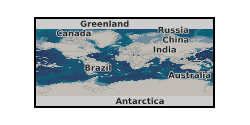
Organic carbon, bulk nitrogen isotope and bulk sulfur isotope and abundance data and metal abundance data from metapelites of the 3.7Ga Isua Supracrustal Belt. For more details, see Stüeken, E.E., Boocock, T., Szilas, K., Mikhail, S. and Gardiner, N.J., 2021. Reconstructing nitrogen sources to Earth’s earliest biosphere at 3.7 Ga. Frontiers in Earth Science, 9, p.675726.
-
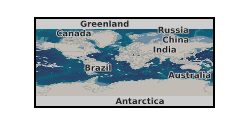
Organic carbon and bulk nitrogen isotope data for black shale samples from six different drill cores with varying distance from the major Zn ore body (HYC) in the McArthur basin. Data show trends with distance in d15N and C/N ratios. A more detailed interpretation is provided in Stüeken, E.E., Gregory, D.D., Mukherjee, I. and McGoldrick, P., 2021. Sedimentary exhalative venting of bioavailable nitrogen into the early ocean. Earth and Planetary Science Letters, 565, p.116963.
-
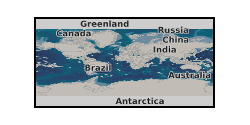
Organic carbon, total nitrogen, total reduced sulfur and carbonate-associated sulfur isotopes measured on decarbonated stromatolite samples from the Paranoa Group (1.1 Ga).
-
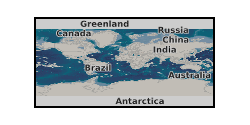
Neodymium (Nd) concentrations, Nd radiogenic isotopes (143Nd/144Nd) and Nd stable isotopes (d146/144Nd) for chondritic meteorites, terrestrial basalts and mantle rocks, and rock reference materials.
-
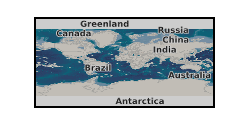
The study in three coal mining regions: Lower Silesia, Upper Silesia and Lublin (each N=500) was conducted using Computer Assisted Web Interview (CAWI). The questionnaire includes the block of questions concerning mine water awareness, climate change and local/place attachment. The survey online took 15 to 20 minutes and was prepared after in-depth pilot research among participants with different education level from the mining regions. We used the uninformed approach to the survey, so there were no additional questions nor requirements for participants prior to the survey. Since the mine water energy extraction is a technical issue that is neither well known nor commonly used in the narratives of Poles, we tested survey questions with pilot cognitive interviews to remove the technical language and reduce the number of replies without understanding. The interviews were conducted with 10 participants in July 2020 and due to the pilot's recommendations and results, we implemented additional changes in the final version of the questionnaire. Specifically, some questions were simplified and the background information on mine water extraction was simplified and shortened The survey CAWI was completed by adult people aged 18-65 (N=1500) between 14-19 August 2020 by Kantar Research Agency. The sample was constructed using KANTAR’s internet panel profiled for the basic demographics, such as gender, age, and the town size. Particular attention paid to the quality of the panel is reflected in its structure. Kantar’s internet panel reflects the profile of the Polish population of Internet users in terms of its participants’ demographic characteristics. The sample from each region was 500 respondents and among the full sample (N=1500) we reached only 192 people who chose to call “mining areas” as best description of the area where they live. Although the three voivodships were chosen due to its mining industry the selected sample covers the region in general in which mining communities are statically not fully represented. We also asked about the subjective perception of the area respondents live in, which we further analysed with spatial distribution. The dataset was created within SECURe project (Subsurface Evaluation of CCS and Unconventional Risks) - https://www.securegeoenergy.eu/. This project has received funding from the European Union’s Horizon 2020 research and innovation programme under grant agreement No 764531
-
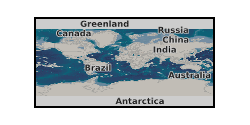
Pyrite samples from selected sedimentary organic-rich formations or associated igneous and metamorphic rocks were analysed by conventional S isotopic analysis. Pyrites were measured in order to provide insights into their origin. Light and variable S isotope compositions in pyrite have been used to infer the influence of sulphate-reducing bacteria (and subsequent Se precipitation by sulphate-reducing microbes), whereas heavier S isotope compositions indicate a non-biological origin (i.e. physical and chemical diagenesis).
-
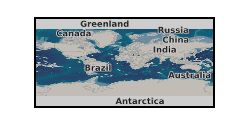
Organic carbon and nitrogen and bulk nitrogen isotope data and metal abundance data for siltstones and shales of the Mesoproterozoic Diabaig Formation. For a detailed description and interpretation, see Stüeken, E.E. and Prave, A.R., 2022. Diagenetic nutrient supplies to the Proterozoic biosphere archived in divergent nitrogen isotopic ratios between kerogen and silicate minerals. Geobiology.
-
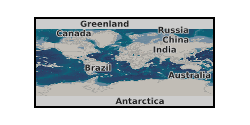
Organic carbon and bulk nitrogen isotope and abundance data and metal abundance data from the Mesoarchean VMS deposit and associated strata. Detailed information is given in Stueeken, E.E., Boocock, T.J., Robinson, A., Mikhail, S. and Johnson, B.W., 2021. Hydrothermal recycling of sedimentary ammonium into oceanic crust and the Archean ocean at 3.24 Ga. Geology, 49(7), pp.822-826.
-

A single Excel spreadsheet giving augite-plagioclase-plagioclase dihedral angle populations in cumulates from the Rustenberg Layered Suite of the Bushveld Igneous Complex. A document providing the background information and location of the samples used in the study. The data have been published: Holness et al. (2017) Contributions to Mineralogy and Petrology, 172:102 doi.org/10.1007/s00410-017-1423-4
-
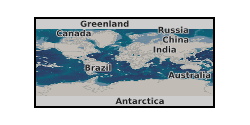
We present new age models for the Ediacaran-Cambrian which lacks a robust global temporal framework. This interval marks the radiation of animals, but there are major uncertainties in the evolutionary dynamics of this critical radiation and its relationship to changes in palaeoenvironmental changes. Here we present global data from 130 successions that enable us to create four new possible global age models (A to D) for the interval 551–517 million years ago (Ma). These models comprise composite carbonate carbon isotope (δ13Ccarb) curves, which are anchored to radiometric ages and consistent with strontium isotope chemostratigraphy, and are used to calibrate metazoan distribution in space and time. These models differ most prominently in the temporal position of the basal Cambrian negative δ13Ccarb excursion (BACE). Two age models (A and B) place the BACE within the Ediacaran, and yield an age of ~538.8 Ma for the Ediacaran-Cambrian boundary; however models C and D appear to be the most parsimonious and may support a recalibration of the boundary age by up to 3 Myr younger. All age models reveal a previously underappreciated degree of variability in the terminal Ediacaran, incorporating notable positive and negative excursions that precede the BACE. Nothwithstanding remaining uncertainties in chemostratigraphic correlation, all models support a pre-BACE first appearance of Cambrian-type shelly fossils in Siberia and possibly South China, and show that the Ediacaran-Cambrian transition was a protracted interval represented by a series of successive radiations. Data were compiled by Fred Bowyer, with support from Andrey Yu. Zhuravlev, Rachel Wood, Maoyan Zhu, Graham Shields, Ying Zhou, Chuang Yang, Simon Poulton, Dan Condon, Andrew Curtis.
 NERC Data Catalogue Service
NERC Data Catalogue Service